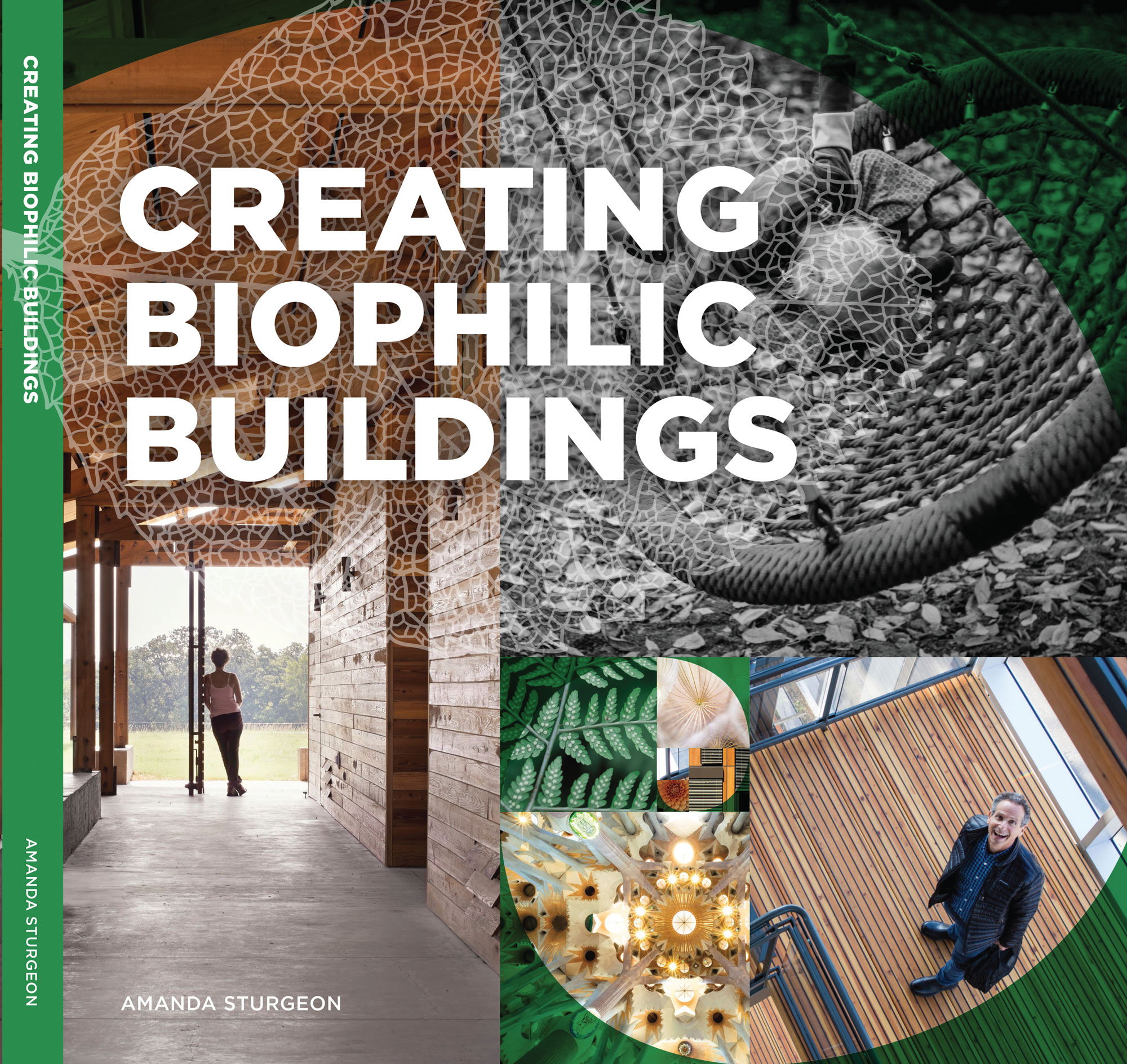Table Of Content

Biophilia is but one piece of the puzzle to creating a vibrant,sustainable, and restorative environment. The integration of amulti-disciplinary strategy in the early stages of development – through astakeholder charrette process or similar – will put team members on equalfooting and allow for the identification of potential strengths, challenges andopportunities. Cultural constructs, social inertia and ecological literacy suffuse differing perspectives on what constitutes natural, nature, wild, or beautiful (126. Tveit et al, 2007 ; 127. Zube & Pitt, 1981 ). Environmental Generational Amnesia and the Ecological Aesthetic Theory help explain how some perspectives may have evolved, and these differences come to bear across countries and regions, as well as among neighborhoods within the same city. Similarly, ecophobia refers to an unreasonable but deeply conditioned disgust for or reaction against natural forms or places. Psychological responses can be learned or hereditary, with past experiences, cultural constructs and social norms playing a significant role in the psychological response mechanism.
Are You Familiar With This Topic? Share Your Experience.
The term “fractal” refers to broken, and in this case relates to designs or patterns that are similar and are geometrically magnified and repeated by a scaling ratio. Mathematician, Benoit Mandelbrot, who coined the term “fractal”, defined the fractals of nature as “a rough or fragmented geometric shape that can be split into parts, each of which is (at least approximately) a reduced-size copy of the whole” (Burn & Mandelbrot 1984, p.71). These nested fractals that are conveyed with a scaling factor of 3 are likely to appear more complex, when compared to those scaled at by factor 1 or 2. Fractal patterns can be found in vernacular architecture such as the colonnade capitals in ancient Greece and Islamic art, or in vegetables such as cauliflower. Jay Appleton’s writing (1975, 1996) is focused on theory and is a good overall reference for both Prospect and Refuge, whereas Grant Hildebrand (1991) has written the most intelligently about Prospect and Refuge in the built environment and is a good reference for applications. In Grant Hildebrand’s words, “The edge of a wood is one of the most prevalent of natural prospect-refuge conjunctions” for it provides protection from weather and predators, but allows for outward surveillance.
Whitney Leigh Morris: Unhurried Restoration and Biophilic Design - Better Homes & Gardens
Whitney Leigh Morris: Unhurried Restoration and Biophilic Design.
Posted: Wed, 20 Sep 2023 07:00:00 GMT [source]
Connecting Improved Experiences to the Bottom Line
Biophilic Design and Glass: Technology Helps Bring Nature Indoors - USGlass Metal & Glazing
Biophilic Design and Glass: Technology Helps Bring Nature Indoors.
Posted: Tue, 30 May 2023 07:00:00 GMT [source]
Biophilic Design is the practice of connecting people and nature within our built environments and communities. The International Living Future Institute has seen a demonstrated need among the Living Building Challenge community for biophilic design resources that can take the practice from theory to reality. ILFI has made it a strategic organizational priority to accelerate access to the benefits of biophilic spaces.
Go green.
“People are craving natural elements in their homes and workspaces to create balance,” says Laurence Carr, a New York City-based interior designer and nominee of the 2019 ASID Design for Humanity Award. As with Apple Park, the Vibes Office is an attempt to bring the benefits of biophilic design into the work environment. Opened in 2021, this building is a multi-zonal construction based around several gardens, and incorporates biophilic features such as green walls and water features. Outside of businesses, there’s also high awareness and demand for biophilic environments – in the hotel industry, guests are willing to pay 23% more for rooms with views of nature. Most interestingly, the healthcare industry look set to particularly benefit from biophilic design, with research finding it can reduce post-operative recovery times by 8.5% and the need for pain medication by 22%. Along with the psychological benefits of biophilia, natural environments have a positive impact on physical health, too.
An increase in tourism to Vietnam has given the country a significant economic boost – so much so that it has become globally-recognised for its work in biophilic design and sustainability. Below is a picture of the Teshima Art Museum, another example of one of Nishizawa’s projects that fosters a connection with nature. Another famous landmark of both biophilia and sustainability, the Bosco Verticale was designed to combat urban sprawl and reduce expansion. The bleak style of the Barbican is juxtaposed with the use of natural and artificial lakes and extensive wildlife. It even has its own conservatory, housing over 1,500 species of plants and trees. The Barbican Centre is one of the earliest and most famous examples of biophilic architecture.
Wash your pet’s food and water bowls to prevent salmonella
Other patterns, such as Connection with Natural Systems [P7], may be more feasible where there is access to an outdoor space, which is a common challenge in dense urban environments. Yet small scale, micro-restorative Visual [P1] and Non-Visual Connections with Nature [P2] and Presence of Water [P5] can also be very effective. For instance, the psychological benefits of nature actually have been shown to increase with exposure to higher levels of biodiversity (118. Fuller el al., 2007 ), yet these benefits do not necessarily increase with greater natural vegetative area. From this we can derive that small, micro-restorative experiences that are also biodiverse are likely to be particularly effective at engendering a restorative biophilic experience. By definition, biophilic design promotes wellbeing by incorporating elements that establish a coherent relationship between nature, human biology, and the building physically, visually, and emotionally.
Biophilic Design Also Allows for Indirect Experiences of Nature
The objective of Biomorphic Forms & Patterns is to provide representational design elements within the built environment that allow users to make connections to nature. The intent is to use biomorphic forms and patterns in a way that creates a more visually preferred environment that enhances cognitive performance while helping reduce stress. Land in urban environments is limited and at a premium, so it may be unrealistic to replicate features more suitable to a rural environment in terms of scale or abundance. As such, biophilic design strategies will differ depending on the local political climate, zoning, geography, land availability and ownership. For instance, San Francisco, with its high-density urban form, implemented a ‘parklet’ system, whereby temporary pop-up parks occupy parking spaces for limited periods of time (116. see City of San Francisco, 2013 ).
Incorporate water elements
It is important to realize that biophilic design is more than just a new way to make people more efficient by applying an innovative technical tool. The successful application of biophilic design fundamentally depends on adopting a new consciousness toward nature, recognizing how much our physical and mental wellbeing continues to rely on the quality of our connections to the world beyond ourselves of which we still remain a part. The fundamental challenge of biophilic design is to address these deficiencies in the modern built environment by initiating a new framework for the beneficial occurrence of nature. The effective application of biophilia begins with adhering to the previously described basic principles. From there, particular practices of biophilic design can be employed to help implement positive and beneficial outcomes.
The Changing Role of Design in Healthcare
Furthermore, in an office context, incorporating nature can improve well-being by 13% and productivity 8%. When coupled with sustainable development, biophilic design can offer significant benefits for the built environment. An efficient healthcare design should provide privacy as well as socializing opportunities (Study 3). Socializing opportunities can be created through spatial arrangement of seating and gathering options (Study 2), the inclusion of communal spaces, children’s play areas, semiprivate enclosures for personal conversations, and even BBQ areas (Study 3). Rather the environment should be flexible to accommodate socializing and withdrawal spaces (Study 2).
By using the right ones, we could create a calming and serene place that can help us become more productive as well as more peaceful. Apple Park embraces the shape of the land – it’s surrounded by a forest of around 9,000 trees and, with a hollowed-out centre full of wildlife, provides employees with a space for well-being and a connection with nature. Similarly, another survey, which asked respondents to name the top three most wanted elements in the workplace, produced three results relating to biophilia – natural light (44%), indoor plants (20%), and a view of the sea (17%). According to a study in 2019 performed by Aarhus University, Denmark, children that are exposed to more nature have 55% fewer mental health problems later in life than those who aren’t.
Images of nature that include aquatic elements are more likely to help reduce blood pressure and heart rate than similar imagery without aquatic elements. While some patterns are more evident in some spaces than others, Non-Visual Connections with Nature are experienced throughout. The integration of water and natural ventilation with the architecture is central to the non-visual experience, supporting a seamless connection between indoor and outdoor spaces, and between the building and the surrounding natural landscape. Solar heat penetrates at distinct locations, the whispering gallery resonates sounds of nature and people, and gardens of rosemary, myrtles, and other fragrant plants surround the premises. The extensive use of water fountains creates a microclimate – the space both sounds and feels cooler – while stone floors and handrails with water channels cool the feet and hands through conductance. Patients aren’t the only occupants of heathcare facilities – caregivers and staff argueably spend the most time in these environments.

No comments:
Post a Comment